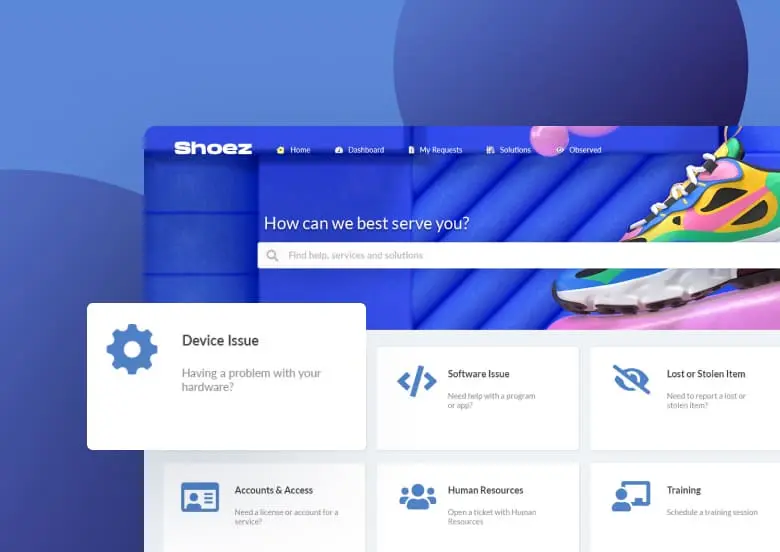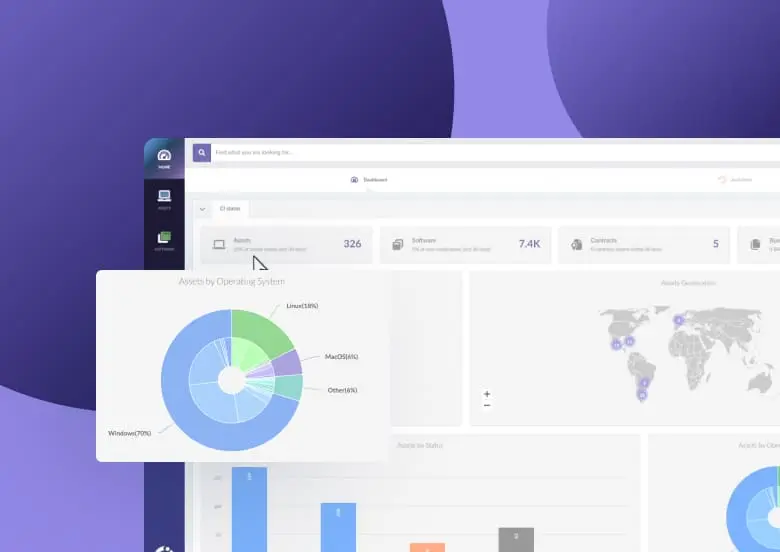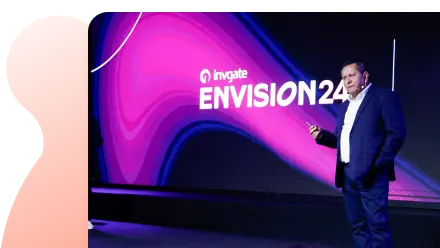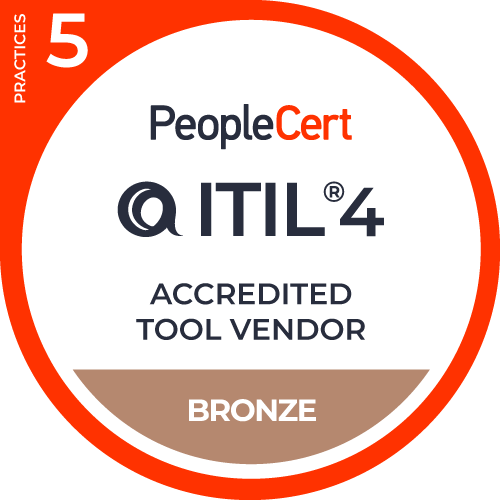Every successful IT strategy begins with IT procurement. You can't manage IT assets within an organization without purchasing them first, and this process involves a set of well-designed steps.
The activities involved here are part of the broader framework of IT Financial Management (ITFM), and play a pivotal role in aligning financial decisions and planning across departments within an organization.
Also, companies around the world are ready to keep increasing IT procurement. According to a recent forecast by Gartner, IT spending is projected to total $5.1 trillion in 2024, an increment of 8% from 2023. The secret, though, is doing it the right way to avoid IT sprawl and waste.
Dive into this comprehensive IT procurement guide to discover why you need a correct procurement strategy, the benefits and challenges of applying this practice, and how InvGate Asset Management can assist and enhance this vital process of obtaining IT assets while optimizing costs with some of its key features.
Whether you're a newcomer to the subject or simply looking to improve your understanding before delving into the process, here you’ll find all you need to know to start or transform your IT procurement journey.
Let’s get into it!

What is IT procurement?
Procurement is the process of acquiring and deploying goods or services – in this case, software, hardware, systems, or any IT-related service. Thus, IT procurement includes the process of analyzing an organization’s information technology strategy and its needs, selecting vendors, negotiating contracts or licenses, and finally executing purchase orders.
IT procurement categories
The specific IT procurement categories can vary based on the context and the organization's needs. However, commonly recognized categories in any procurement process may include:
- Direct procurement – It refers to the acquisition of goods or services that will be directly utilized in the production process. In the tech realm, it involves acquiring essential goods and services that impact your IT infrastructure, such as hardware, fixed assets, servers, or necessary software licenses.
- Indirect procurement – It contributes to the everyday functioning of a business, focusing on internal operations. Within IT, this procurement revolves around maintaining smooth daily operations like purchasing consumable supplies, cloud-based software solutions, and managing utilities.
- Services procurement – It usually focuses on services provided by individuals but can also include Software as a Service (SaaS). The procurement process may encompass both direct and indirect acquisition methods.
- Goods procurement – Goods procurement typically pertains to physical assets such as hardware, but it can extend to involve enterprise software as well. Effective IT Procurement Management practices play a crucial role in this process, guaranteeing the smooth integration of direct and indirect procurement methods within the IT framework.
Why do you need IT Procurement Management?
In today's complex digital landscape, an IT Procurement Management strategy helps IT executives to ensure that their infrastructures are equipped with all the necessary items. This also guarantees that changes can be implemented swiftly and seamlessly, minimizing disruptions to company operations and gaining control over IT assets across the organization.
As applications and Software as a Service (SaaS) have become more accessible across various business units, IT departments can often lose control over the spending and security of all purchased technology. This situation has led to a significant issue known as SaaS sprawl – the uncontrolled proliferation of applications within an organization.
In fact, 59% of IT professionals identify SaaS sprawl as the most significant challenge in managing this type of application. The lack of centralized oversight can result in unsanctioned apps, limited visibility, and difficulties in identifying and mitigating potential issues, such as shadow IT.
In order to carry out a proper IT procurement strategy, it’s crucial to conduct IT audits regularly to gain sight of your organization’s license compliance, server security, or asset health and to see what you’re missing.
IT procurement becomes paramount to enhance security, optimize costs, and ensure that all your organization’s IT purchases align well with your business strategy.
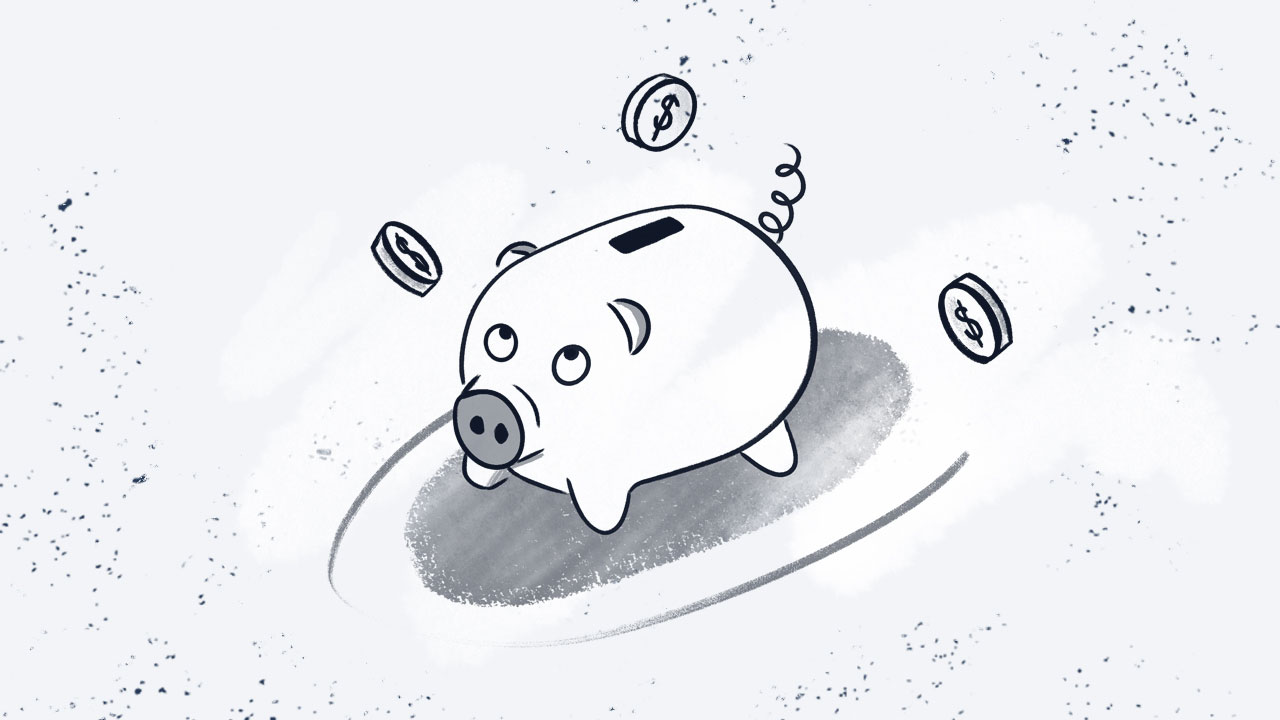
The Beginners Guide to IT Budgeting
Benefits and challenges of procurement in IT
Benefits of IT procurement
There are several benefits that come from implementing an optimal IT procurement strategy. Here are the main ones:
- Strategic alignment – IT procurement aligns technology acquisitions with the organization's strategic goals, ensuring that IT investments contribute directly to business objectives and growth.
- Risk Management – Proper procurement practices ensure the acquisition of reliable and high-quality IT products and services, reducing the risk of operational disruptions and security vulnerabilities.
- Cost optimization – Efficient procurement processes help organizations negotiate better deals, leverage bulk purchasing power, and identify cost-effective solutions, ultimately optimizing overall expenditure.
- Supplier Relations Management – Establishing solid relationships with IT suppliers fosters collaboration, innovation, and favorable terms, enhancing the overall efficiency of the procurement ecosystem.
- Decision-making – By understanding the financial constraints and opportunities within your IT ecosystem, effective planning becomes possible. This process facilitates informed decisions on priorities and projects.
- GRC assurance – Done right, IT procurement processes enforce adherence to Governance, Risk and Compliance (GRC) requirements, ensuring that software licenses, data handling, and security practices comply with industry standards.
Challenges of implementing IT procurement
However, the practice also comes with a set of challenges to consider before implementing it:
- IT budgeting and planning – The absence of a robust IT budgeting strategy poses a significant hurdle for procurement, as forecasting planned spending can become challenging. In contrast, crafting an IT budget can help you to define specific procurement needs for your organization.
- Lack of an RFP process – Without a well-defined Request For Proposal (RFP) process, organizations may struggle to articulate their requirements and engage with potential suppliers in a transparent, structured, and fair manner.
- Diversified asset inventory – It is critical to have a unified asset inventory in order to know what your next move in IT procurement should be. Without this, organizations may struggle to organize and manage IT hardware and software throughout their lifecycle efficiently.
- Change Management – Implementing new IT procurement processes may face resistance from stakeholders accustomed to existing practices, necessitating effective Change Management strategies to ensure smooth transitions.
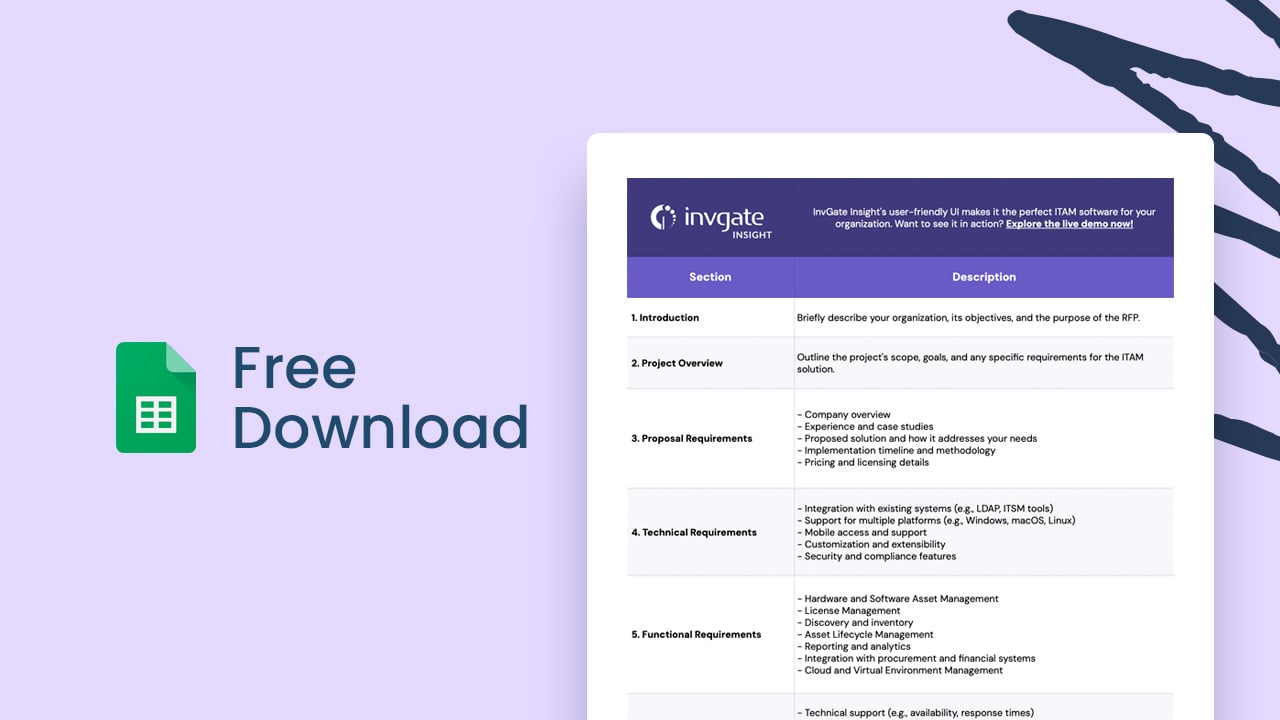
Asset Management RFP Template [Guide and Free Download]
The IT procurement strategy
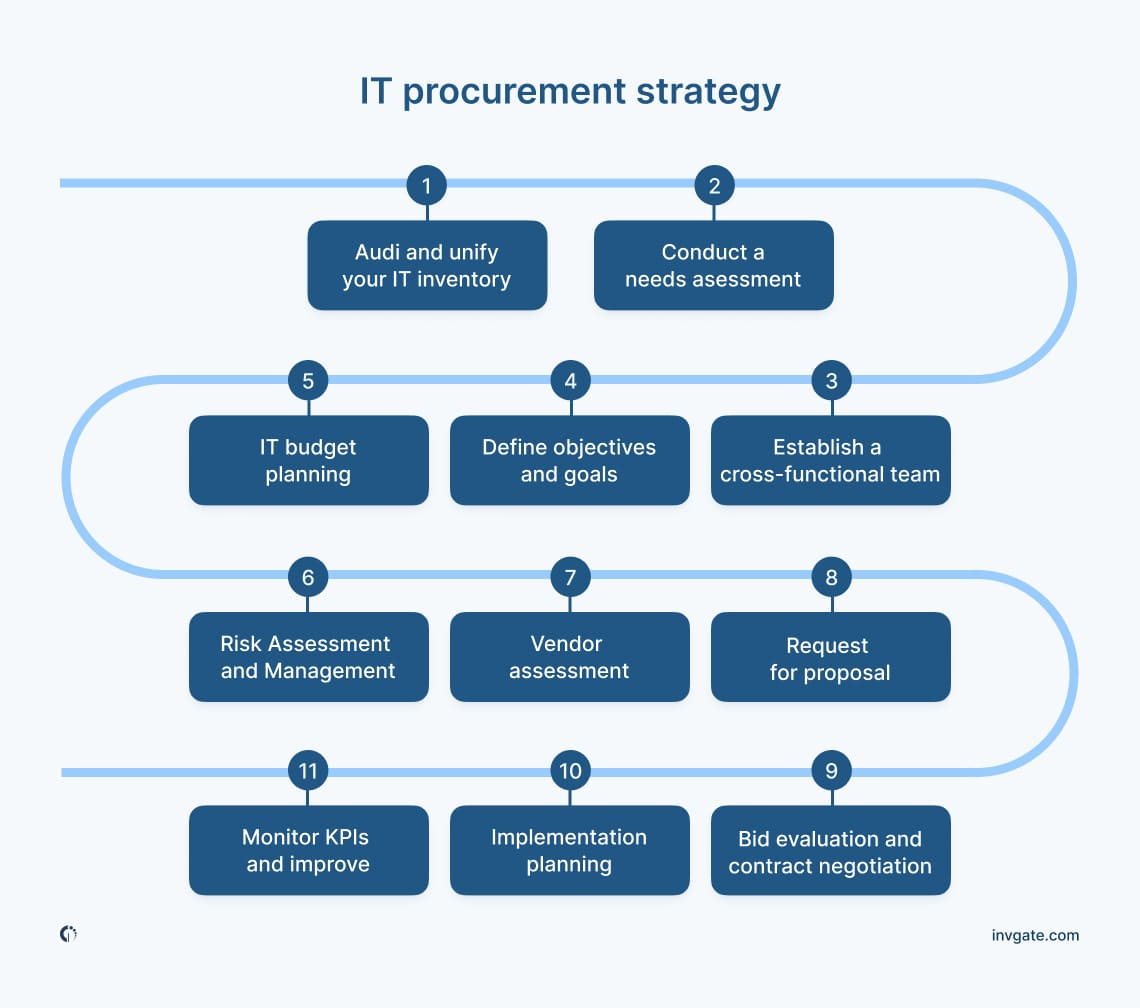
Although the optimal IT procurement strategy can vary for every organization, the following guide outlines the main steps to consider if you are on the lookout for a robust IT Procurement Management.
1. Audit and unify your IT inventory
Before delving into IT procurement, conduct a thorough audit of your existing IT assets. Identify and catalog hardware, software, and other IT resources across the organization. Unify this information into a centralized inventory with the help of an IT Asset Management (ITAM) tool that can provide a comprehensive overview.
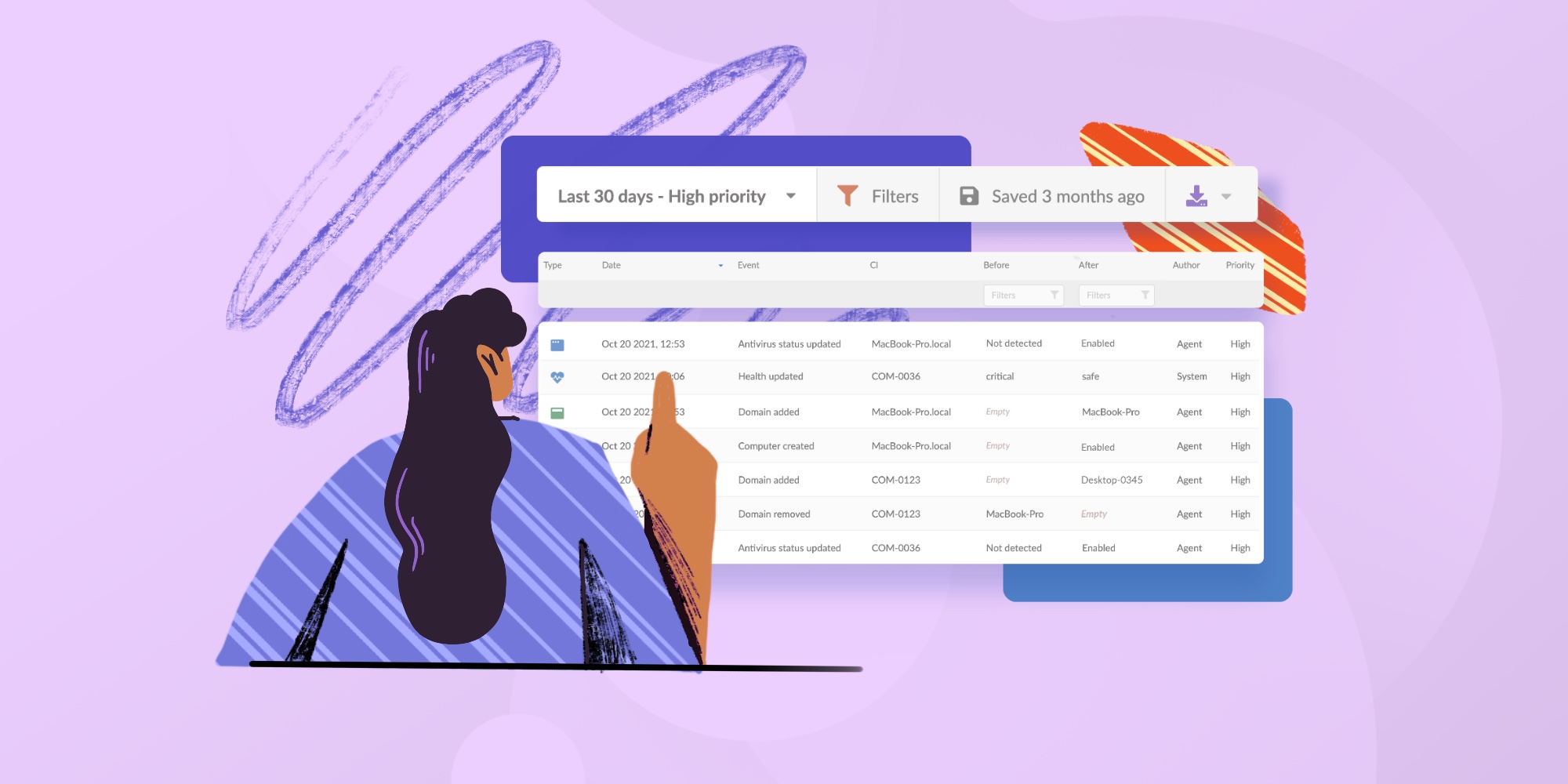
How to Get a Unified IT Asset Inventory in 24 Hours
2. Conduct a needs assessment
Once you’ve audited and inventoried your IT assets it is time to analyze and evaluate the needs for products and services related to information technology, such as operating systems, software licenses, printers, servers, and more.
3. Establish a cross-functional team
As this process affects the organization as a whole, it is essential to gather a team that involves people from different departments such as Finance, Supply Management, or HR, depending on the IT procurement needs of the company.
4. Define objectives and goals
Clearly, after assessing the needs and designing a team for the task, it is necessary to articulate the objectives and goals of the IT procurement strategy. Align these with the overall business strategy to ensure a cohesive approach.
5. IT budget planning
Develop a comprehensive IT budget that aligns with the strategic goals. Consider not only the cost of IT products and services but also factors such as maintenance, training, and potential upgrades.
6. Risk assessment and management
Identify potential risks associated with IT procurement, such as vendor reliability, cybersecurity threats, and compliance issues. Develop strategies to mitigate and manage these risks effectively.

The ABC of Risk Management Automation
7. Vendor assessment
Establish criteria for evaluating and selecting vendors. Consider factors like reputation, financial stability, experience, and the ability to meet specific IT requirements.
8. Request for information, quotation, or proposal
Develop clear and detailed requests before any purchases. In the early stages of the process, you may need to send a Request for Information (RFI) to understand the market and its key players.
Then, when you are ready to look for pricing information from potential vendors, you can send a Request for Quotation or submit a Request for Proposal (here you can download a free template!) when you’re looking for potential vendors to answer with their estimates on how they would reach the criteria and goals you asked for.
9. Bid evaluation and contract negotiation
Evaluate bids received in response to RFPs, considering technical, security, and financial aspects. Engage in negotiations with selected vendors to secure favorable terms and conditions.
10. Implementation planning
Develop a detailed plan for the implementation of IT solutions. Include considerations for installation, training, data migration, and integration with existing systems.
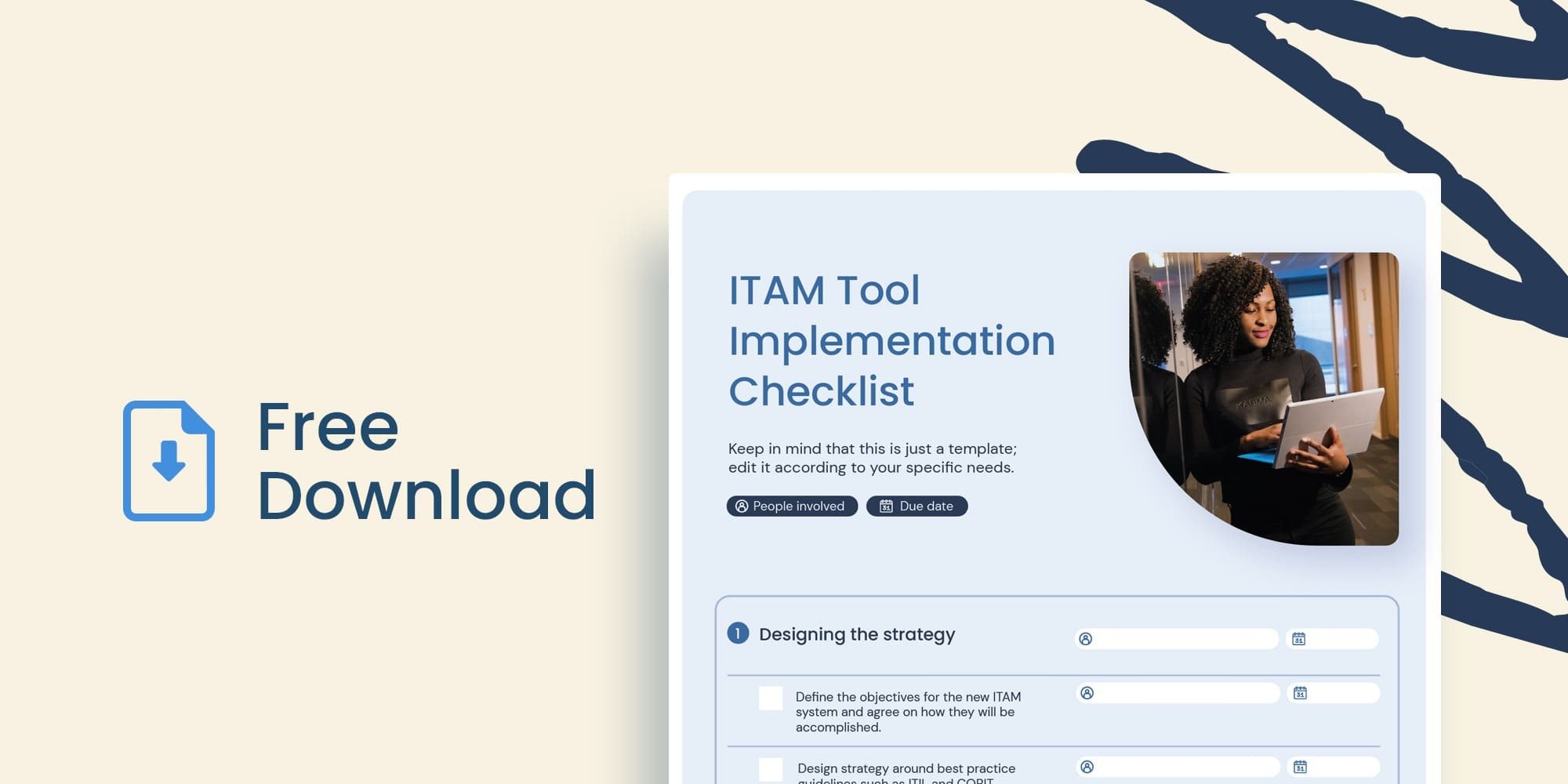
The Ultimate IT Asset Management Checklist [+Free Template]
11. Monitor KPIs and improve performance
Establish Key Performance Indicators (KPIs) to measure the success of the IT procurement strategy. Monitor vendor performance, cost-effectiveness, the achievement of strategic objectives, or any other indicator according to your goals. Then, review and improve your IT procurement strategy based on regular reporting.
Using InvGate Asset Management as your IT procurement software
When it comes to streamlining IT procurement processes, InvGate Asset Management emerges as a powerful ally, offering an array of features designed to enhance efficiency and optimize decision-making.
Here's how InvGate Asset Management can elevate your IT procurement practices:
Comprehensive IT Inventory Management
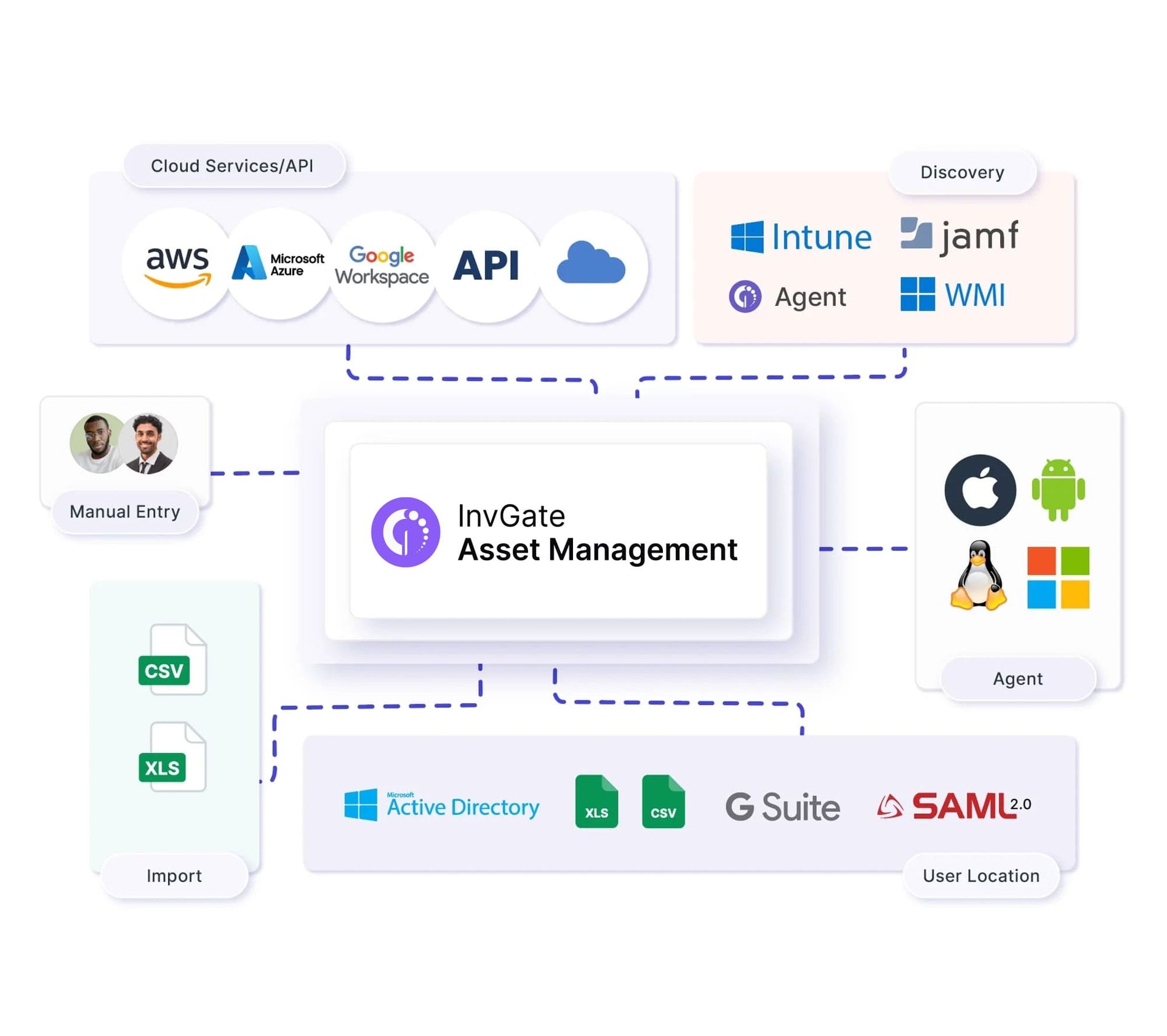
InvGate Asset Management allows you to craft a comprehensive IT inventory with confidence, knowing that no asset will be overlooked. By leveraging both agent-based and network scanning capabilities you can automate the inventory process, minimizing the risk of manual errors. This way, you will know exactly where you are before initiating any IT procurement process.
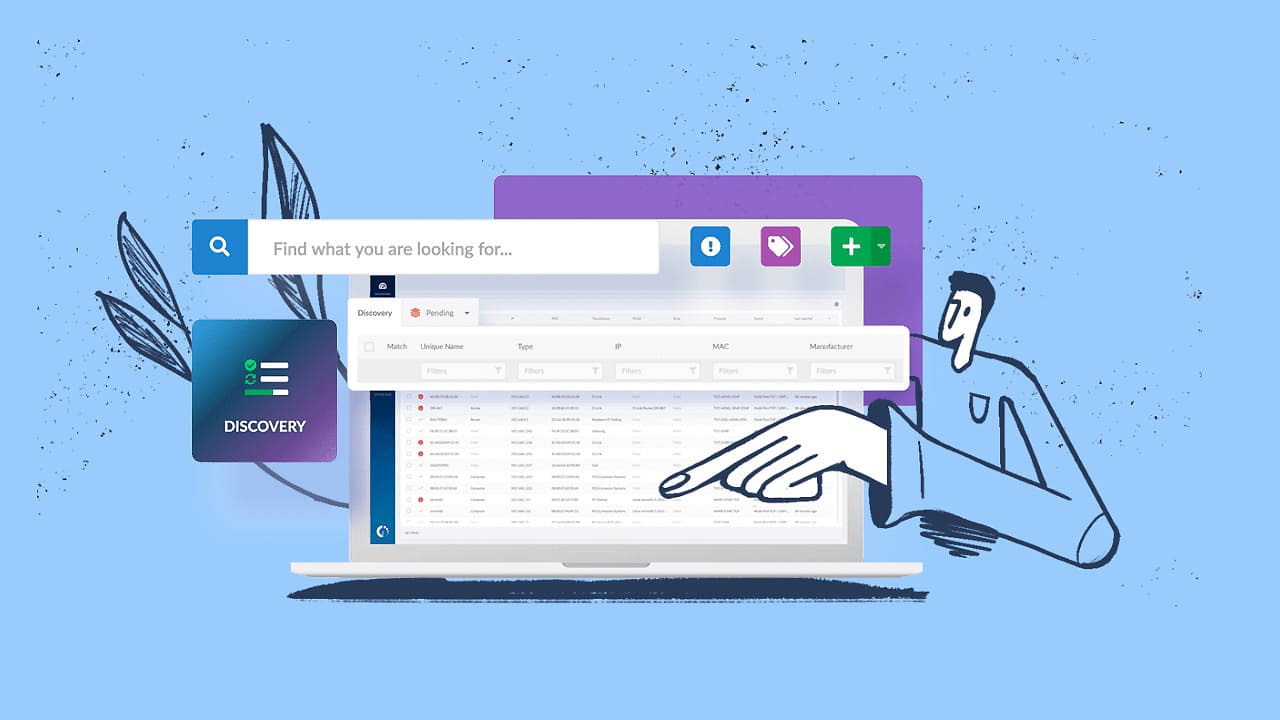
IT Asset Discovery: What is it, How it Works, And Why You Need it
Financial visibility with IT Budgeting
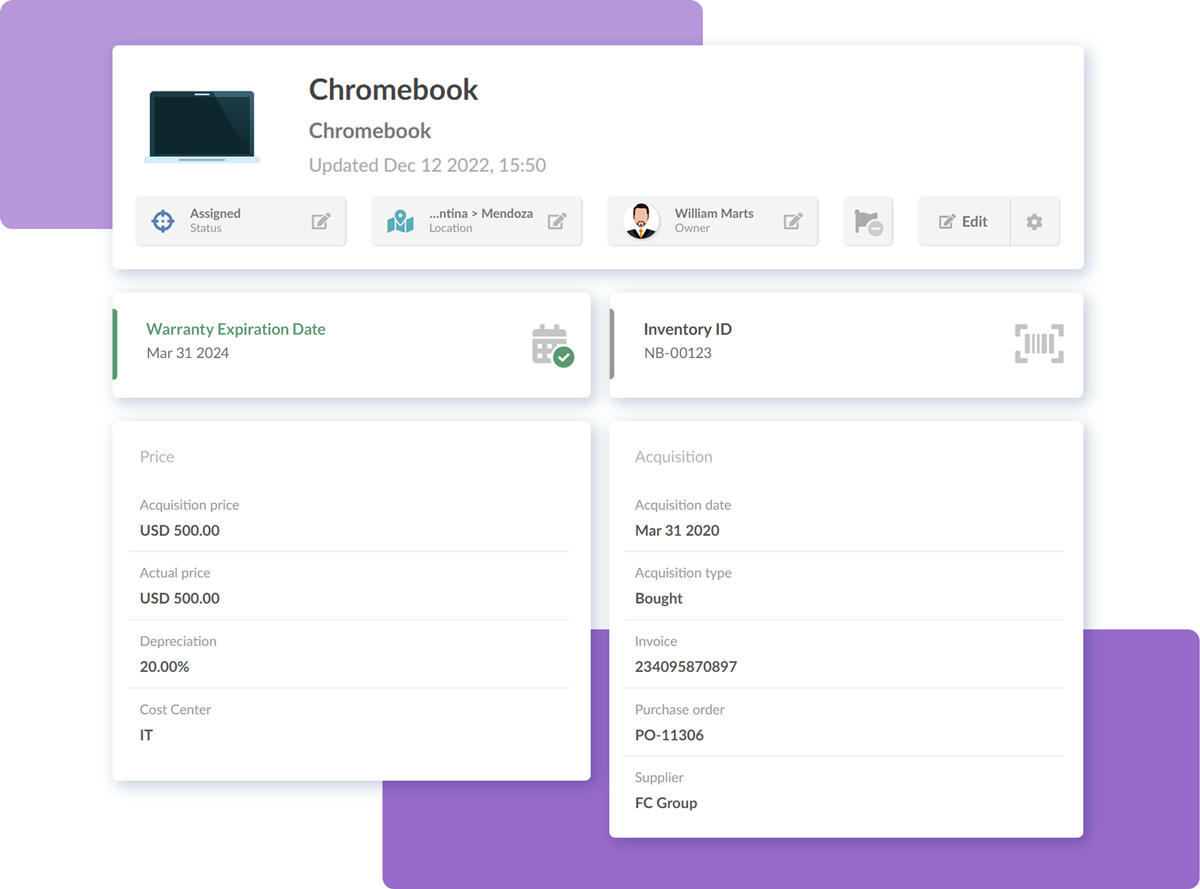
InvGate Asset Management’s IT Budgeting and Asset Depreciation feature incorporates pertinent financial data related to assets. This includes insights into current investments, depreciation rates of hardware, software metering, and contracts linked to devices which are key indicators to analyze before and during an IT procurement process.
CMDB discovery and visualization
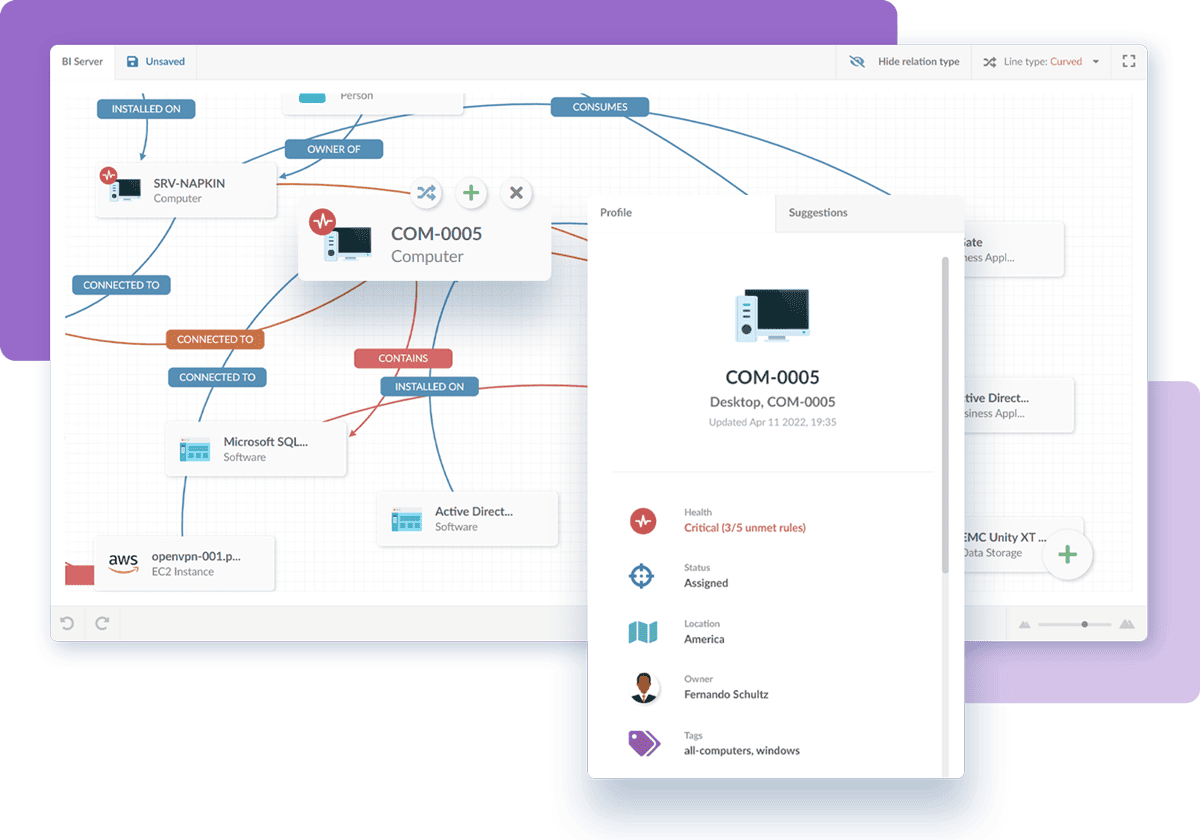
Having a clear and dynamic view of relationships between systems and applications is instrumental for IT procurement.
InvGate Asset Management's Control Management Database (CMDB) provides a comprehensive understanding of the interconnectivity of all your Configuration Items (CIs), aiding in the identification of dependencies, potential gaps, and areas for improvement.
Risk Management across asset lifecycle
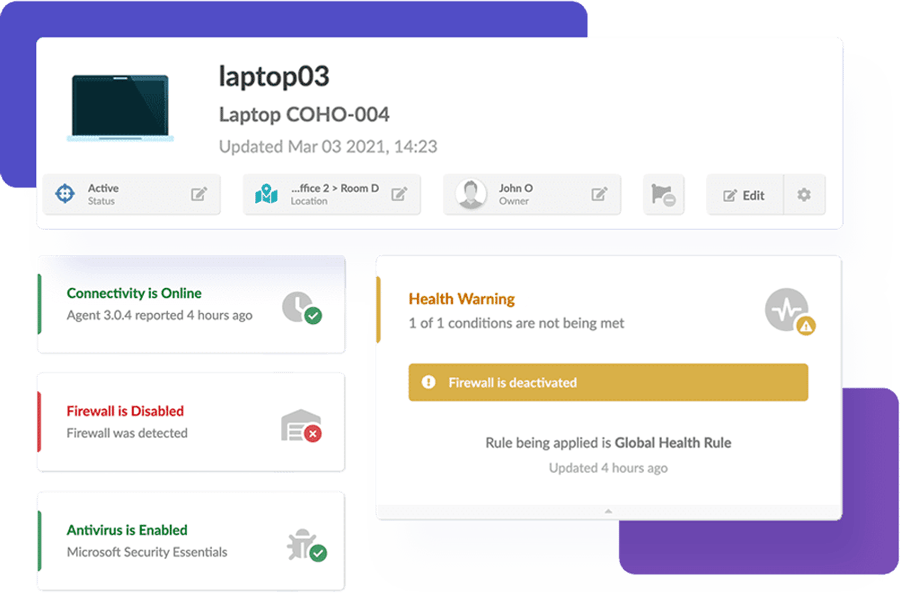
InvGate Asset Management supports the management of the entire IT asset lifecycle, from procurement to decommissioning/disposal. By implementing Risk Management functions, such as asset health rules, you can enforce critical internal controls at various stages and make better informed procurement decisions.
IT asset tagging for tracking
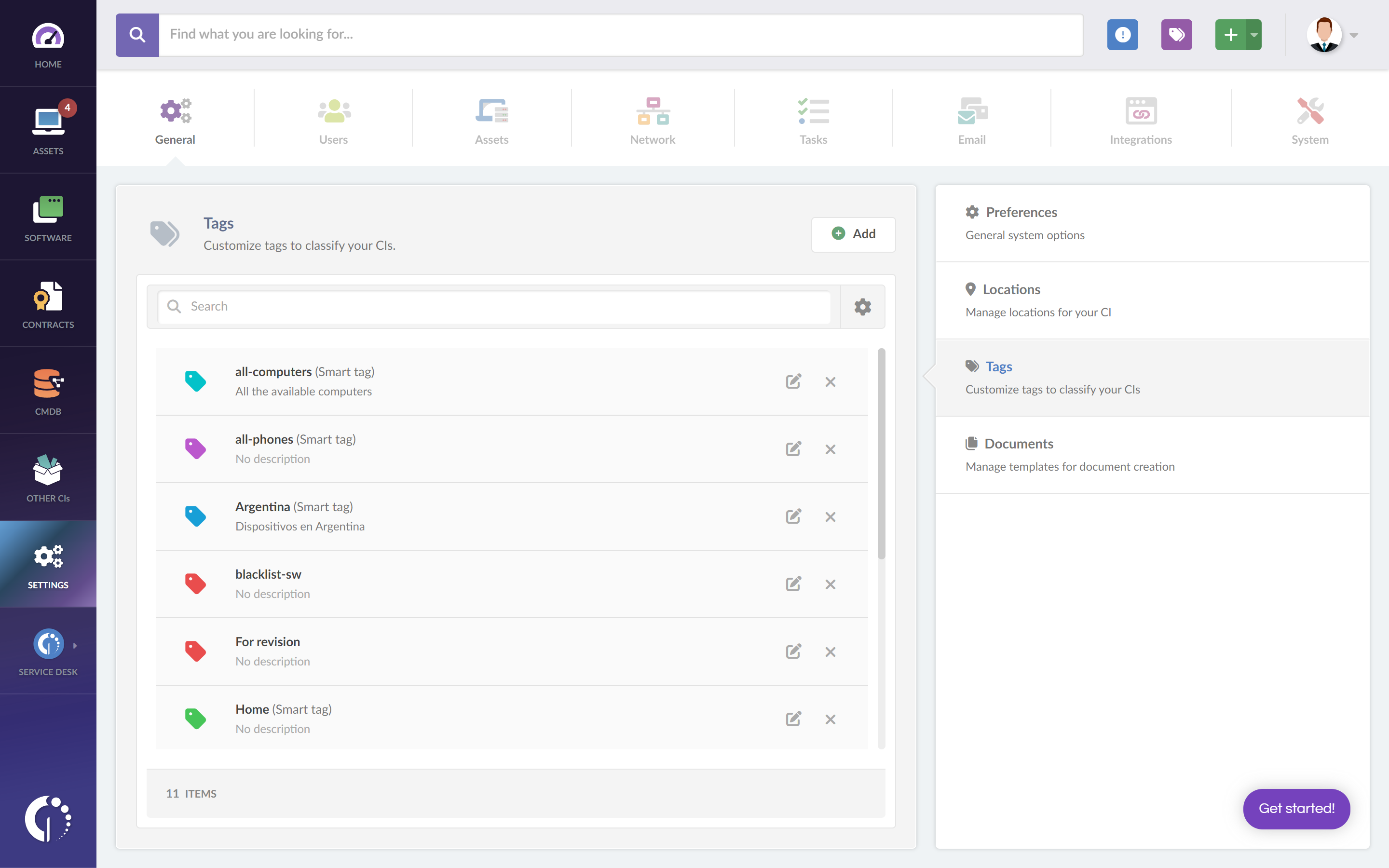
Tracking your assets is essential for adapting to changing procurement needs. Through both physical and digital IT asset tagging, with InvGate Asset Management you can implement proactive ITAM measures, staying on top of your whole IT environment and predicting upcoming replacements.
Effortless software deployment

In the realm of IT procurement, efficient software deployment is crucial. InvGate Asset Management's script-powered software deployment ensures that newly acquired software or updates are seamlessly installed across the organization.
IT procurement best practices
It is clear that setting the right IT procurement strategy is critical for companies looking to enhance operational efficiency.
Here are a few of the IT procurement best practices to elevate this process:
- Ensure that your IT procurement cycle aligns with your organization's financial year so you have enough time to assess, plan, purchase, and deploy IT assets.
- Establish clear and specific criteria for vendor selection and craft a comprehensive RFP, considering factors such as reputation, financial stability, and cybersecurity measures.
- Implement ongoing monitoring of vendor performance and contract compliance to enable proactive issue resolution, fostering strong and sustainable vendor relationships.
- Embrace technology solutions like InvGate Asset Management to streamline processes, automate Inventory Management, and enhance decision-making efficiency for IT procurement.
In short
A successful IT strategy starts with IT asset procurement (including hardware, software, and IT services), aligning financial decisions across departments within an organization.
Some key takeaways from this ultimate guide:
- A comprehensive IT procurement strategy is paramount for ensuring swift changes without disruptions, addressing challenges like SaaS sprawl, and emphasizing IT audits for compliance.
- Some of its benefits include strategic alignment, risk mitigation, and cost optimization, while challenges involve IT budgeting, RFP processes, and diversified inventory.
- There are several steps involved in an enhanced IT procurement strategy, such as auditing IT inventory, assessing needs, plan implementation, among others.
- You can streamline and enhance this process with InvGate Asset Management as it provides financial visibility, supports Risk Management, and offers CMDB discovery and visualization.
To explore the full capabilities of InvGate Asset Management in managing your IT assets – from procurement to disposal – you can simply request our 30-day free trial.
Frequently Asked Questions
What is the role of IT in procurement?
In procurement, IT involves budgeting, crafting a Request for Proposal (RFP) for vendors, analyzing prospects, selecting technology, and controlling IT Asset Management through its entire lifecycle.
Who are the key players in the procurement process?
Key players in the procurement process include procurement officers, buyers, suppliers, stakeholders from various departments, and often IT professionals.
What does an IT procurement manager do?
An IT procurement manager is responsible for overseeing the acquisition of IT goods and services. Their role includes vendor selection, contract negotiation, budget management, and ensuring that IT purchases align with the organization's strategic goals.
How can procurement and IT work together?
Procurement and IT can collaborate by establishing clear communication channels, aligning strategic goals, and involving IT early in the procurement planning process.
How to procure IT services?
Procuring IT services involves defining requirements, identifying potential vendors, issuing Requests for Proposals (RFPs), evaluating proposals, negotiating contracts, and managing vendor relationships.
How to set KPIs for IT procurement?
Key Performance Indicators (KPIs) for IT procurement may include metrics like cost savings, vendor performance, contract compliance, procurement cycle time, and stakeholder satisfaction.
